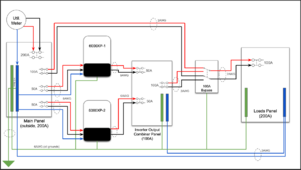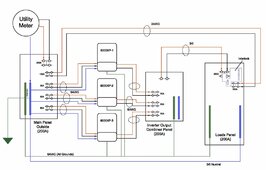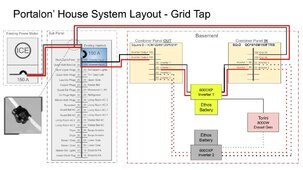Hi all - I’ve watched all the videos and read lots of the threads (but definitely not all of them). People seem to be comfortable with different levels of planning vs experimentation on these setups for multiple inverters. I’m hoping to cut down on the mistakes (and the costs), so if you have relevant experience I'd really appreciate your feedback.
Last edited:






